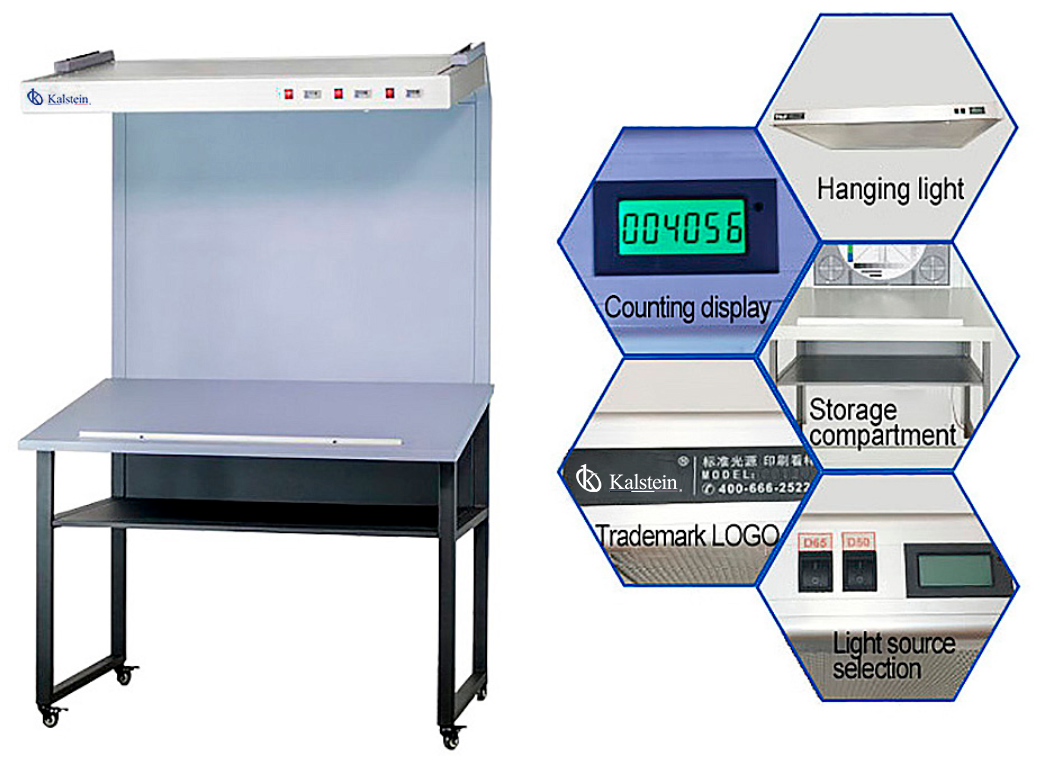Medical laboratories are key elements in preventing, diagnosing and treating many diseases. These are located in operating rooms, emergency rooms, hospitals and clinics, among other places. Often, medical staff use state-of-the-art technology to evaluate the person’s tissues for abnormal elements. Such examinations help doctors observe tissue morphology and coloration and make sure that they are normal.
In this sense, one of the processes that is carried out with fabrics is the analysis of color. When the tissues are examined under microscopes, their color can give a lot of information about the person’s condition. For example, abnormally colored tissue may indicate internal problems that need to be treated. Therefore, the color study serves as the basis of the diagnostic process, making it necessary for this procedure to be carried out in a controlled and rigorous manner.
Color assessment box as a tool for medical diagnosis
The color assessment box is a laboratory analysis tool used to determine the color of tissues. This tool comprises an ultraviolet light box with a display screen at the bottom of the box. The operator places a tissue blister on the display screen and adjusts the amount of ultraviolet light to reflect the exact color of the tissue.
Medical professionals can use the Color Evaluation Box to detect abnormal tissue and make a decision about diagnosis and treatment. For example, if the color of the tissues corresponds to the color of healthy tissue, the health care practitioner may conclude that the patient has no abnormal condition. Such contrasts, while unable to say what the patient has, could at least say what he is not.
Another use of the color assessment box is to measure the normalized degree of color (CNM) in tissues. MNC is the degree of color that tissue must exhibit to be considered normal and disease-free. The CNM is useful to compare the condition of the tissues of different patients to determine if there are any significant differences. On the basis of these applications, the purchase of these equipments by the hospitals is justified, since the price paid will be rewarded in a better service to the patients.
The use of color evaluation box in medical laboratories
In medical laboratories, the color evaluation box is also used to check color uniformity. This is done to check for tissue problems such as malfunction of the circulatory system or malfunction of organs. Finally, the Color Evaluation Box can also be used to detect malignant tissues.
This is then done by microscopic examination to determine if the tissues are discolored. The result of this examination can help doctors plan the most appropriate treatment for the person. Therefore, the study of the color of the tissues can yield valuable information that helps to understand the health status of people.
To conclude, the color assessment box is a valuable tool for medical professionals working in laboratories. This tool helps doctors detect tissue problems and make good decisions about diagnosis and treatment. This ensures that patients receive the best care possible.
Kalstein’s color evaluation boxes as support of medical laboratories
More and more medical laboratories have Kalstein’s color assessment box to perform the color study of the tissues, as a routine and complementary examination to know if they are normal or there are any abnormalities. The boxes produced by the manufacturer meet international quality control standards, are made of durable materials and provide an environment with consistent and consistent lighting to determine the color of fabrics. These kits are available for sale on our websites HERE and HERE, where advisors will answer any questions, you may have.

